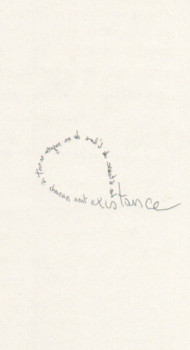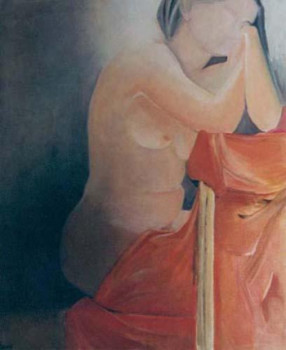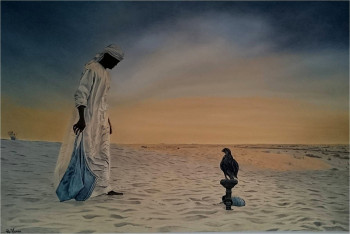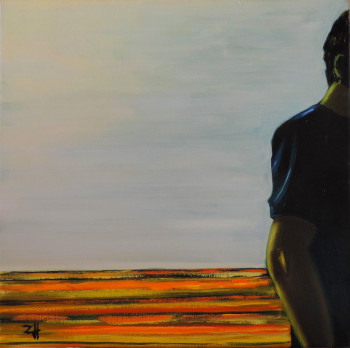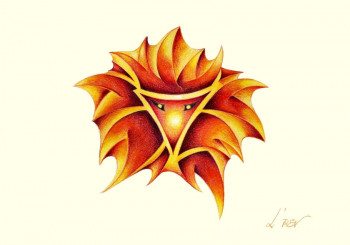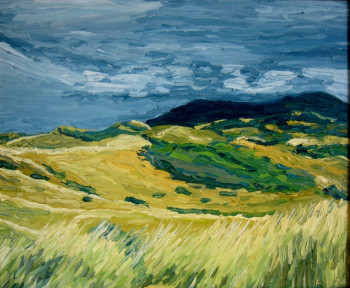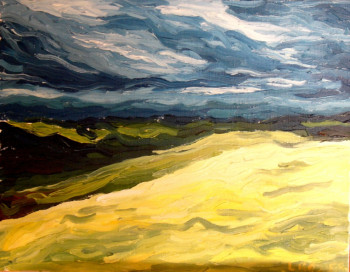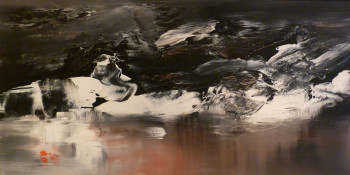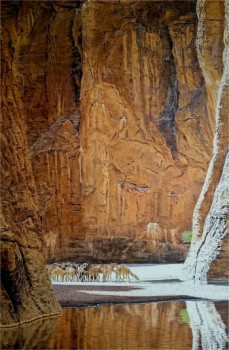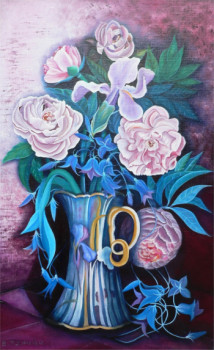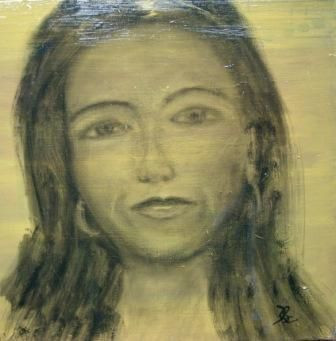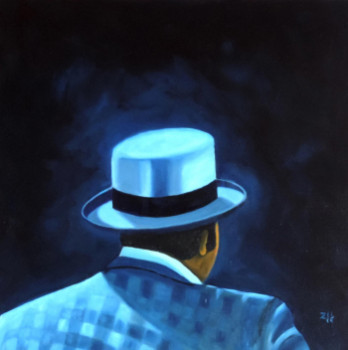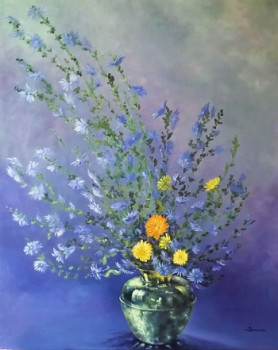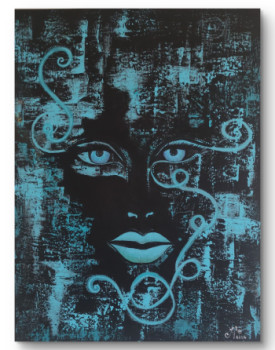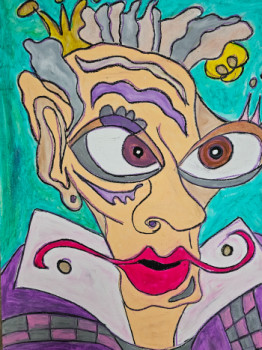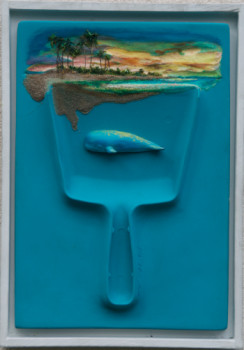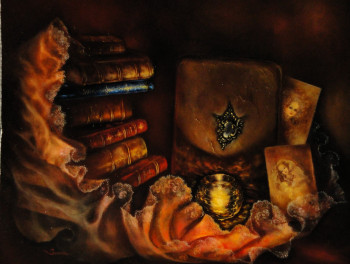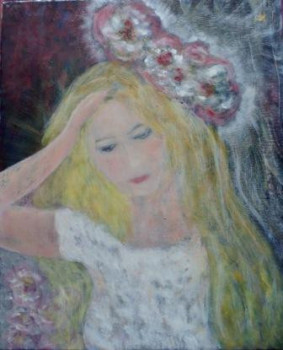
Balthus, this painter little known to the general public

"The best way to start is to say: Balthus is a painter about whom we know nothing. And now, let's look at the paintings." This sentence uttered by the painter himself is full of meaning when trying to get to know this 20th century painter .
Who was this figurative painter? Why is he known? Let's go together to meet Balthus.
Balthus grew up in a rich cultural environment
By his real name Balthasar Klossowski de Rola, Balthus was born in Paris on February 29, 1908 in a Polish family linked to artistic circles. Indeed, his father Erich is a painter and art historian and his mother, Elizabeth Dorothea Spiro, called Baladine Klossowska, is also a painter. Pierre Klossowski, his older brother, is a writer and designer.
Nationality German, the family was forced to abandon France during the First World War. She is then collected at Zurich by Professor Jean Strohl. The Klossowski couple separated in 1917. Baladine Klossowska moved in with her two sons a few months away. Berne before residing in Berne. Geneva in November.
The beginnings of the painter artist
Balthus enrolled at Calvin College in 1919. Very early on, this young self-taught artist became interested in painting. painting and drawing. At the age of 11, this painter artist published in 1921, under the name Baltusz, drawings with different colors. the ink in «Mitsou le Chat» a book written by his mother's companion, Rainer Maria Rilke. This Austrian poet even offers him a preface. He resettled with his mother and brother in Paris. Berlin in spring 2021 before settling on Beatenberg in May 1923.
That same year, the painter met his first wife through his house. Beatenberg, Antoinette de Watteville, then aged 12, who will be his model for several of his paintings.
His return Paris
He returned to France in 1924, registering as a free student at the University of Paris. the Academia de la Grande Chaumière in Paris Paris.
Encouraged; by two French painters, Pierre Bonnard and Maurice Denis, to whom he shows his drawings, this painter copies the works of Nicolas Poussin at the Louvre.
Thanks to the patronage of Professor Jean Strohl, this painter spent the summer studying in Italy in 1926 to study and copy the frescoes of Piero della Francesca in Italy. Arrezo and Masaccio Florence.
In 1929, the painter took part in his first exhibition by presenting around ten of his paintings in the Förter gallery in Zurich.
In his first works, the painter wants to be the heir to the classical great masters by choosing to depart from the classical tradition. tour of the avant-gardes of the 20th century. He boasts compositions staged with precision and perfect technique.
He became fond of Antoinette, whose first portrait he painted, when he spent several weeks with the Wattevilles in the summer of 2008. 1930. He carried out his military service in Morocco from October 1930 to 1930. December 1931.
His life as a painter
Balthus rents a workshop in Paris in March 1933 and will be advised by the painter André Derain.
In April 1934, Balthus exhibited at the Pierre à gallery; Paris paintings with young teenage girls the ambiguous outfit. He takes up the themes that are dear to him such as scenes from everyday life, portraits of young girls or young naked boys. His work is imbued with a sexual theme which has often shocked people.
The year 1935 was a productive year for this painter who:
- created the costumes and sets in Antonin Artaud's adaptation of «Cenci»
- publishes 8 illustrations for Les «Hauts de Hurlevent» by Emily Brontë
- paints a self-portrait "The King of Cats"
- carries out a first study of one of his next works «The Mountain» which he painted between 1936 and 1937
After a laborious courtship, this figurative painter married Antoinette de Watteville on April 2, 1937 with whom he had two sons, Stanislas and Thadée, before separating in 1947.
New perspectives
In 1953, this painter retired from the Parisian artistic environment to live at the Château de Chassy until 1961. It was in these places that he painted magnificent landscapes. The same year, he was named by André Malraux, Minister of Cultural Affairs, director of the Académie de France à; Rome until 1977. He then undertook numerous restoration works in the buildings as well as the gardens of the Villa Medici. In 1962, he was sent to on a diplomatic mission to Japan by André Malraux. There he met his second wife, Setsuko Ideta, with whom he had a daughter, Harumi. They married in 1967.
This figurative painter returns to Switzerland Rossinières in 1977. He died there on February 18, 2001 in Paris. at the age of 93.
The Work of Balthus
This figurative painter dies, leaving a body of work of some 350 paintings far from mainstream fashions. both fantastic and academic, between surrealism and realism.
His first paintings assert his independence. This painter belongs neither to the surrealists nor to the cubists. His paintings reflect the influence of Pierre Bonnard. Balthus' ideals are painters of the Italian tradition such as Piero della Francesca or French painters like Courbet, Cézanne or Chick. He turned his back on the avant-gardes of the 20th century, which did not prevent him from having a friendly relationship with Giacometti or Picasso. The latter even bought one of his works, The Blanchards Children.
It was not until 1934 that Balthus's style and themes were developed.
Balthus tries:
- to portraits by painting artists or acquaintances (Joan Miro and her daughter Dolores in 1937) or his own portrait «The King of Cats» (1935)
- to landscapes such as "La Montagne" in 1937 or "Paysage de Chassy" in 1957
- still life like "Still life" in 1937 or "Still life (quince and pear)" painted in 1956
Balthus is famous for his paintings revealing young girls painted in ambivalent poses exposed to the gaze of voyeurs. This figurative painter prefers to paint teenage girls whom he sees as a symbol. Indeed, according to Balthus, adolescent girls, unlike women, embody the future. According to Balthus, "a woman's body is already complete. The mystery has disappeared." Subject to Despite numerous controversies, Balthus painted works that often shocked museum visitors. One of his most famous works is "The Guitar Lesson" which the figurative painter painted in 1934. This depicts a sexual scene between a young girl and her music mistress. In the United States, this painting was also sold. subtracted from public view.
However, although the ambiguity is Sexuality is represented in many of this painter's paintings, Balthus painted many works that clearly come out of this theme such as "The Street" (1933) , "Thérése Rêvant" (1938) or "La Chambre" (1952-1954).
In a published writing: In 1996, Claude Roy defined Balthus as «rare and discreet, rare and secret». His paintings depicting young girls halfway between perversity and and innocence, sometimes asleep, sometimes disturbing, often accompanied by cats bathe in a magical universe full of mysteries.
Découvrez quelques oeuvres inspirées de Balthus
